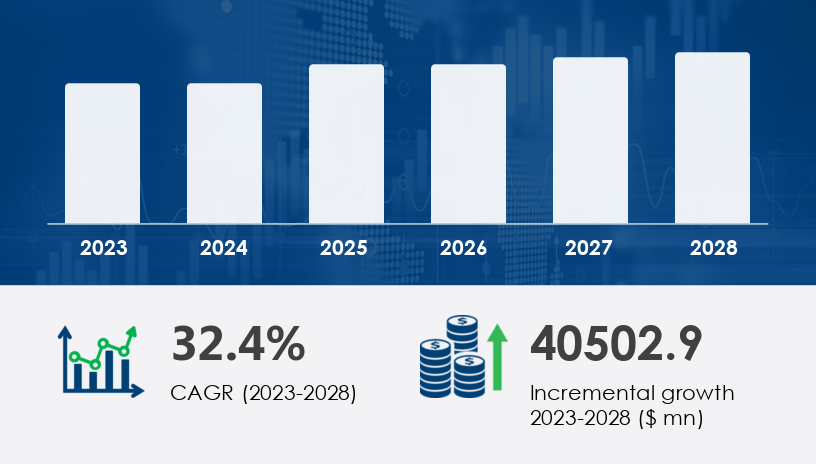The same day delivery market is experiencing unprecedented growth, with projections indicating an increase of USD 40.50 billion at a CAGR of 32.4% between 2023 and 2028. This surge is driven by the rapid expansion of e-commerce, advancements in logistics technology, and evolving consumer expectations for faster delivery services. This comprehensive guide delves into the factors propelling this growth, examines emerging trends, and provides strategic insights for stakeholders in the logistics and e-commerce sectors.
For more details about the industry, get the PDF sample report for free

The Same Day Delivery Market is expanding rapidly, fueled by the surge in online shopping and the growing demand for expedited shipping. Services like same-day delivery, express courier, instant shipping, rush delivery, and priority service are becoming standard offerings, especially in competitive urban markets. E-commerce platforms are increasingly relying on last-mile delivery solutions such as drone delivery, delivery robots, and autonomous vehicles to enhance delivery efficiency and reduce time-to-customer. Logistics providers are integrating real-time tracking and parcel tracking systems to offer greater transparency, while smart solutions like delivery lockers and contactless delivery are improving customer satisfaction. The market serves a wide array of sectors including grocery delivery, food delivery, and retail packages, with an increased emphasis on safe and efficient transport of essential goods such as medical supplies, blood specimens, and pharmaceutical delivery through reliable courier services.
1. E-commerce Expansion: The proliferation of online shopping has significantly amplified the demand for swift delivery services. Consumers increasingly expect their purchases to arrive on the same day, compelling retailers to enhance their delivery capabilities.
2. Technological Advancements: Innovations such as automated warehouses, real-time tracking systems, and autonomous delivery vehicles have streamlined operations, reducing delivery times and enhancing efficiency.
3. Consumer Expectations: The desire for instant gratification has led consumers to favor retailers offering same day delivery options, influencing purchasing decisions and fostering brand loyalty.
By End-User:
B2C (Business-to-Consumer): Dominates the market, driven by the increasing preference for online shopping and the need for rapid delivery services.
B2B (Business-to-Business): Gaining traction as businesses require timely delivery of goods to maintain supply chain efficiency.
C2C (Consumer-to-Consumer): Emerging segment, facilitated by platforms enabling peer-to-peer transactions.
By Service Type:
Regular Service: Standard same day delivery options.
Priority Service: Faster delivery for urgent shipments.
Rush Service: Expedited delivery for time-sensitive items.
By Region:
See What’s Inside: Access a Free Sample of Our In-Depth Market Research Report.
The integration of automated systems and robotics in warehouses and delivery processes has significantly reduced human error and increased operational speed. For instance, companies like Amazon and FedEx are investing in robotic sorting systems to expedite package handling.
Innovations in drone and autonomous vehicle technologies are reshaping last-mile delivery. Companies like DHL and UPS are piloting drone deliveries to enhance speed and reduce costs.
With growing environmental concerns, logistics companies are adopting sustainable practices. Amazon, for example, has committed to making half its deliveries net-zero carbon by 2030.
Companies are implementing various strategies, such as strategic alliances, partnerships, mergers and acquisitions, geographical expansion, and product/service launches, to enhance their presence in the market. Leading companies in this market include:
Investment in Technology: Stakeholders should invest in automation and AI to streamline operations and meet consumer expectations for rapid delivery.
Sustainability Focus: Adopting eco-friendly delivery methods can enhance brand image and appeal to environmentally conscious consumers.
Flexible Delivery Options: Offering a range of delivery services, from regular to rush, can cater to diverse customer needs and preferences.
Request Your Free Report Sample – Uncover Key Trends & Opportunities Today
The same day delivery market is poised for continued growth, driven by technological advancements and shifting consumer behaviors. Retailers and logistics providers must adapt to these changes by embracing innovation and prioritizing customer satisfaction.
Infrastructure Limitations: Developing the necessary infrastructure to support widespread same day delivery can be capital-intensive.
Regulatory Hurdles: Navigating the complex regulatory landscape, especially concerning drone and autonomous vehicle deliveries, poses challenges.
Operational Costs: Balancing the high costs associated with expedited delivery services while maintaining profitability remains a significant challenge.
Research into the same day delivery sector emphasizes the importance of logistics technology in enhancing order fulfillment and delivery scheduling. Key innovations such as delivery apps, smart lockers, automated terminals, and route optimization software are streamlining package handling and improving urban logistics operations. Companies are establishing delivery hubs to better manage inventory and support a responsive supply chain capable of on-demand delivery. Sustainable delivery practices and green logistics initiatives are also gaining momentum as firms work to reduce environmental impact while maintaining service quality. Cross-border shipping is increasingly integrated into same-day delivery models for global retailers, while delivery notifications and seamless communication continue to enhance customer engagement. Overall, the market is defined by its push for innovation, speed, and adaptability, ensuring it meets the evolving expectations of consumers and businesses alike.
Get more details by ordering the complete report
Enhance Logistics Networks: Investing in robust logistics infrastructure can improve delivery efficiency and reliability.
Adopt Advanced Technologies: Implementing AI, robotics, and automation can streamline operations and reduce costs.
Focus on Customer Experience: Providing flexible and reliable delivery options can enhance customer satisfaction and loyalty.
The same day delivery market is undergoing a transformative phase, driven by technological innovations and evolving consumer expectations. Stakeholders in the logistics and e-commerce sectors must navigate this dynamic landscape by embracing change, investing in technology, and prioritizing customer-centric strategies to capitalize on the opportunities presented by this growing market.
For a deeper understanding of the same day delivery market and to stay ahead of industry trends, download our in-depth research report today. Gain valuable insights to inform your strategic decisions and drive success in the rapidly evolving logistics landscape.
Safe and Secure SSL Encrypted